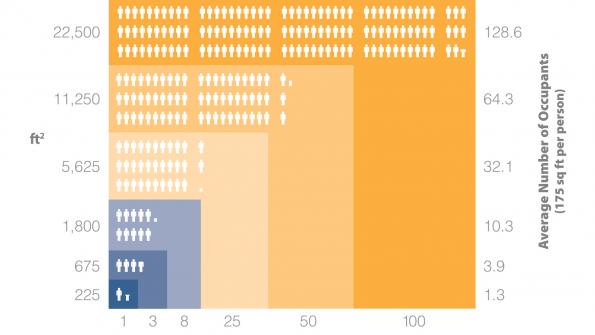How to specify sound masking in facilities (with related video)
Editor’s note: Sound masking should be used in government facilities where occupants require speech privacy and freedom from distracting noises. Applications include government offices, call centers, hospitals, courthouses, policing, military and other high security facilities, as well as Sensitive Compartmented Information Facilities. Here are the views of acoustics expert Niklas Moeller on this important topic.
To ensure that a sound masking system works as expected, a clear set of performance standards must be established prior to procurement. If not, the system might not provide the desired level of speech privacy or noise control. The following elements are vital to every project’s success:
Adjustment Zone Size
The single most important factor is to place an upper limit on zone size or groups of individually controllable loudspeakers. Small zones of one to three loudspeakers (225 to 675 square feet) provide a high degree of flexibility. If the system uses larger zones, numerous loudspeakers are set to the same volume and frequency, and compromises must be made. For example, if the volume needs to be increased to improve the system’s effectiveness in one area, it might be too loud in another, affecting occupant comfort.
Masking Sound Generation
To avoid phasing (uncontrollable variations in masking levels), each small zone should have a dedicated masking sound generator. To maintain the system’s unobtrusiveness, each generator should also provide a truly random sound (i.e. no repeat cycle). The sound must cover the entire masking spectrum of 100 to 8,000 hertz.
Volume Adjustment Capabilities
Fine volume control in 0.5-decibel steps should be provided for each small zone, enabling the user to make adjustments for local conditions. If not, they will be forced to set the volume to a level that is best on average, compromising effectiveness and occupant comfort at various unpredictable points across the space. They can typically expect a 10 percent reduction in performance for each decibel below the target masking volume. Furthermore, large variations will call occupants’ attention to the sound.
Frequency Adjustment Capabilities
The system should also provide fine frequency control within each small zone. The range should be specified to be between 100 to 8,000 hertz. The system should offer control over these frequencies via third-octave adjustment, which is the industry standard and basis for masking targets set by acousticians.
Additional Considerations
Depending on the project at hand, the specification may need to include secondary considerations such as timer functions, control methods, security features, and paging features. It is also wise to learn what services are offered in support of each system under consideration.
For a sample of a generic performance-based sound masking specification, go here. Providing its terms are upheld, the specification allows for competitive bids while ensuring a high level of performance from the system ultimately selected. 
About the author
Niklas Moeller (pictured at the right) is vice-president of K.R. Moeller Associates Ltd., a global developer and manufacturer of the sound masking system, LogiSon Acoustic Network. K.R. Moeller Associates is headquartered in Burlington, Ontario. The author can be reached at [email protected].
In this video, learn more about the LogiSon Acoustic Network.




















